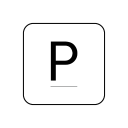How We Built A $1.2MM/Year Business Selling Light Up Ice Cubes
Hello! Who are you and what business did you start?
Hey, y’all! I’m Hagan Walker - one of the co-founders of Glo! We make liquid-activated products under two different brands - Glo Cubes, which are light up drink cubes - and Glo Pals, light-up sensory toys for children. Both incorporate the same patented liquid activation circuitry.
Basically, you drop one of our products in liquid and it uses ions in the liquid to bridge an electrical circuit, causing the cube to light up. Not only is the circuit patented, but we also have a unique design that isn’t triggered by residual fluid or ice. This means Glo Cubes work very well in a restaurant setting. When someone finishes a drink, the light goes out, indicating to the server that a refill is needed. The same idea translates to the Glo Pals. These bath toys only work in liquid - just draw a bath and drop them in. They automatically light up, and when you drain the tub, they turn off on their own - no buttons or switches to forget about!
It’s a strange combination (internally, we joke about kids and cocktails - ha!), but I’ll get into how that all came about in just a bit. We’re a bit quirky and, in this...

Download the report and join our email newsletter packed with business ideas and money-making opportunities, backed by real-life case studies.

Download the report and join our email newsletter packed with business ideas and money-making opportunities, backed by real-life case studies.

Download the report and join our email newsletter packed with business ideas and money-making opportunities, backed by real-life case studies.

Download the report and join our email newsletter packed with business ideas and money-making opportunities, backed by real-life case studies.

Download the report and join our email newsletter packed with business ideas and money-making opportunities, backed by real-life case studies.

Download the report and join our email newsletter packed with business ideas and money-making opportunities, backed by real-life case studies.

Download the report and join our email newsletter packed with business ideas and money-making opportunities, backed by real-life case studies.

Download the report and join our email newsletter packed with business ideas and money-making opportunities, backed by real-life case studies.



























